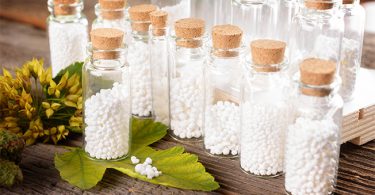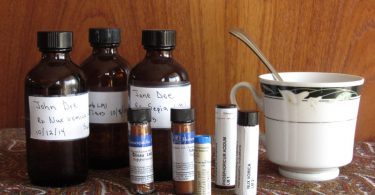Abstract: Monographs given in the Homoeopathic Pharmacopoeia of India describe the drug from its chemical name, common name, description identification, assay, storage, history and authority, and its preparation. In the case of chemical kingdom, the assay given under the monograph is helpful to perform an assay on the drug. Taking the drug Ferrum metallicum into consideration, the preparation is by trituration with sugar of milk under decimal scale. This study is aimed to find the amount of elemental iron present in the first three potencies of Ferrum metallicum.
Materials and methods: Ferrum metallicum crude, Ferrum metallicum potencies1x, 2x and 3x, Copper sulphate, Dil. Sulphuric acid, Distilled water, Potassium permanganate, and a compound microscope.
Result: The potency 1x showed value of iron 1/10th of that of the same quantity analysed from the crude, in the potency of 3x the value of the elemental iron showed 1/10th of the quantity that of 2x. Conclusion: The study concludes the quantitative reduction of the elemental iron in the subsequent potencies, and paves way for future research on the potencies beyond the Avogadro’s number.
Keywords: Ferum metallicum, iron, titration.
Introduction: The drug, Ferrum metallicum, described under the class VII of preparation under the old method, Ferrum metallicum is prepared as a mother substance, comes under dry and substances neither soluble in alcohol or water [1, 2]. In the new method, under trituration in decimal scale Drug strength being 1/10. Prepared with sugar of milk by the process of trituration. Each potency takes 1 hour for preparation. [3]
Aims and objectives: To estimate the amount of elemental iron in the triturations of Ferrum metallicum, to establish the co-relation between the potencies based on drug strength.
Materials and methods: Ferrum metallicum crude, Ferrum metallicum potencies1x, 2x and 3x, Copper sulphate, Dil.Sulphuric acid, Distilled water, Potassium permanganate.
Identification of the crude: source of Ferrum metallicum is mineral kingdom. It is an odourless, greyish-black powder, lustreless. It is stable in dry air, but in moist air, it slowly oxidizes to hydrate ferric oxide, it is insoluble in water and alcohol, soluble in dilute mineral acids with the evolution of hydrogen.
The crude iron powder and sugar of milk were procured from Father Muller Homoeopathic Pharmaceutical Division, Mangalore after proper identification and standardization procedures. The triturations were prepared in Dept of Homoeopathic Pharmacy, Father Muller Homoeopathic medical college, as per the directions given in HPI,Vol 1. [3]
Preparation of reagents:
0.1N Potassium permanganate: 3.161gm in 1000ml of distilled water
0.01N Potassium permanganate: 0.158gm of potassium permanganate in 500ml of distilled water
5 per cent of Copper sulphate: 5gm of copper sulphate in 100ml of distilled water.
Assay of the crude: [3, 4]
0.25gm of iron was taken and was shaken with a hot solution of 1.25gm of copper sulphate in 20ml of water, rapidly filtered and the filtrate was washed with water, it was acidified with sulphuric acid and titrated with 0.1N potassium permanganate. [Fig 1, 2, 3, 4]
Each ml of potassium permanganate is equivalent to 0.005585gm of iron.
Assay of the triturations: [3, 4]
1x: Shake in a stoppered flask for 10min about 0.25gm, accurately weighed, with a hot solution of 1.25gm of copper sulphate in 20ml of water, filter rapidly and wash the filtrate with water, acidify the filtrate with sulphuric acid and titrate with 0.1N potassium permanganate.[Fig 5,6]
Each ml of potassium permanganate is equivalent to 0.005585g of iron.
Implies that 25.13 mg of iron is present in 0.25gm of Ferrum met 1x
2x: Weigh accurately about 5gm, char in silica crucible to make ash and shake with 20ml 5 per cent copper sulphate solution for ten minutes. Filter rapidly and wash the filtrate with water, acidify the filtrate with sulphuric acid and titrate with 0.01N potassium permanganate. [Fig 7, 8]
Each ml of potassium permanganate is equivalent to 0.00558g of iron
3x: Weigh accurately about 20gm, char in silica crucible to make ash. Shake the ash with 20ml 5per cent copper sulphate solution and follow the method given in 2x potency.[Fig 7,8]
Each ml of potassium permanganate is equivalent to 0.00056gm of iron.
Observations and Results:
Assay of the crude (0.25gm): After running 44.6ml of Kmno4 the endpoint was observed as dark red colour indicating that 0.249gm of iron in the sample
Assay of 1x: Procedure given was followed, colour change to green colour was observed at 3ml of
Potassium permanganate was run from the burette, followed by permanent change to dark
Green colour at 4.5ml of potassium permanganate was run.
Implies that 25.13 mg of iron is present in 0.25gm of Ferrum met 1x.
Assay of 2x: Procedure given was followed, colour change to dark blue was observed at 1ml of potassium permanganate was run from the burette, followed by permanent change to violet at 2ml of potassium permanganate was run.
Implies that 5.58mg of iron is present in Ferrum metallicum 2x.
Assay of 3x(20gm): Procedure given was followed, colour change to dark blue was observed at 2.7 ml of potassium permanganate was run from the burette, followed by permanent change to violet at 3ml of potassium permanganate was run.
Implies that 2 mg of iron is present in Ferrum metallicum 3x.
| Potencies of Ferr. met | 0.25gm | 5gm | 20gm | Projected values for 100gm |
| 1x | 25.13mg | – | – | 10.05 gm |
| 2x | – | 5.58 mg | – | 0.11gm |
| 3x | – | 0.50mg | 2.0mg | 0.01gm |
Limitations of the study [5]:
The change of colour during titration was not mentioned in the source, hence the point of colour change in the solution was taken as the indicator, as titration procedure’s endpoint is based on the colour change indicating the end of reaction.
For comparison purposes, 3x was analysed, taking 5gm of trituration, the procedure followed was the process given under the 20gm analysis.
The potency 1x was not done with 5gm, the value given for 1x was 0.25gm and the measure of copper sulphate to be taken was given accordingly making it difficult for excess amount to be assessed.
References:
1) Goel Sumit.Art and science of homoeopathic pharmacy. Indian books and periodicals publishers. New Delhi.3rd enlarged and revised edition.
2) Mandal M. A textbook of homoeopathic pharmacy. New central book agency.3rd edition.
3) Govt. of India ministry of health. Homoeopathic pharmacopoeia of India. Manager Govt of India press.Coimbatore 1971.1st edition.
4) Govt. of India ministry of health. Homoeopathic pharmacopoeia of India. Manager Govt of India press.Coimbatore 1990.6th edition.
5) J.B.Stenlake.A.H.Beckett. Practical pharmaceutical chemistry. CBS Publishers and distributors.3rd edition. Volume1.
Fig 1: Checking the ph of the filtrate
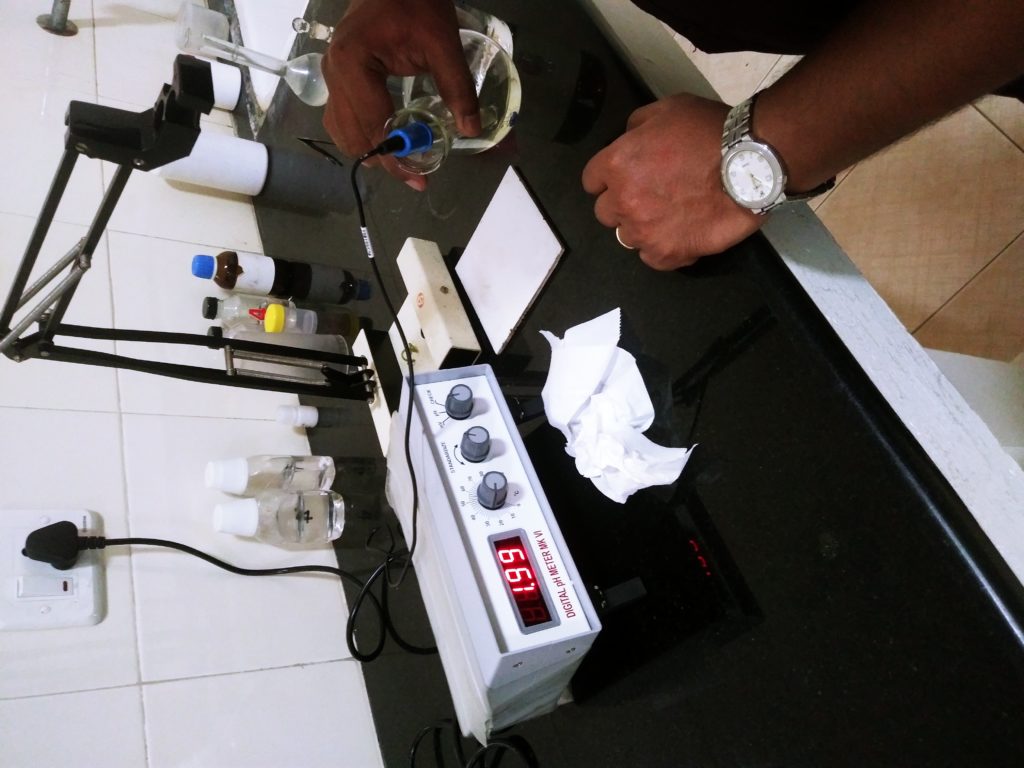
Fig 2: Filtration
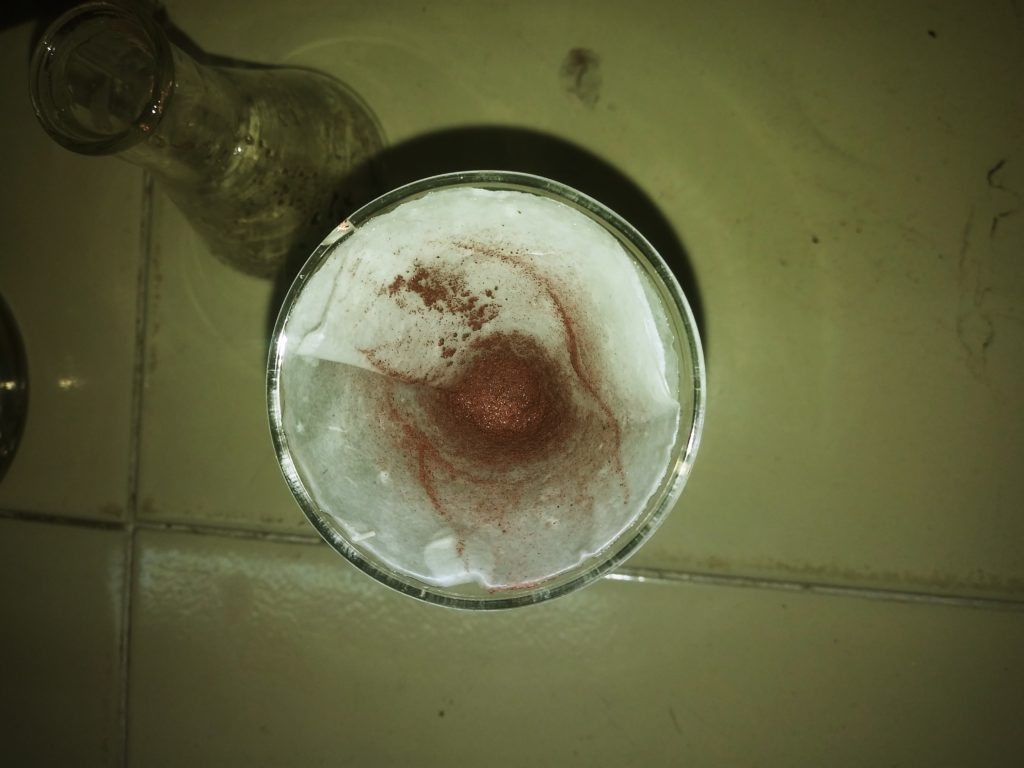
Fig. 3: Filtrate of the crude
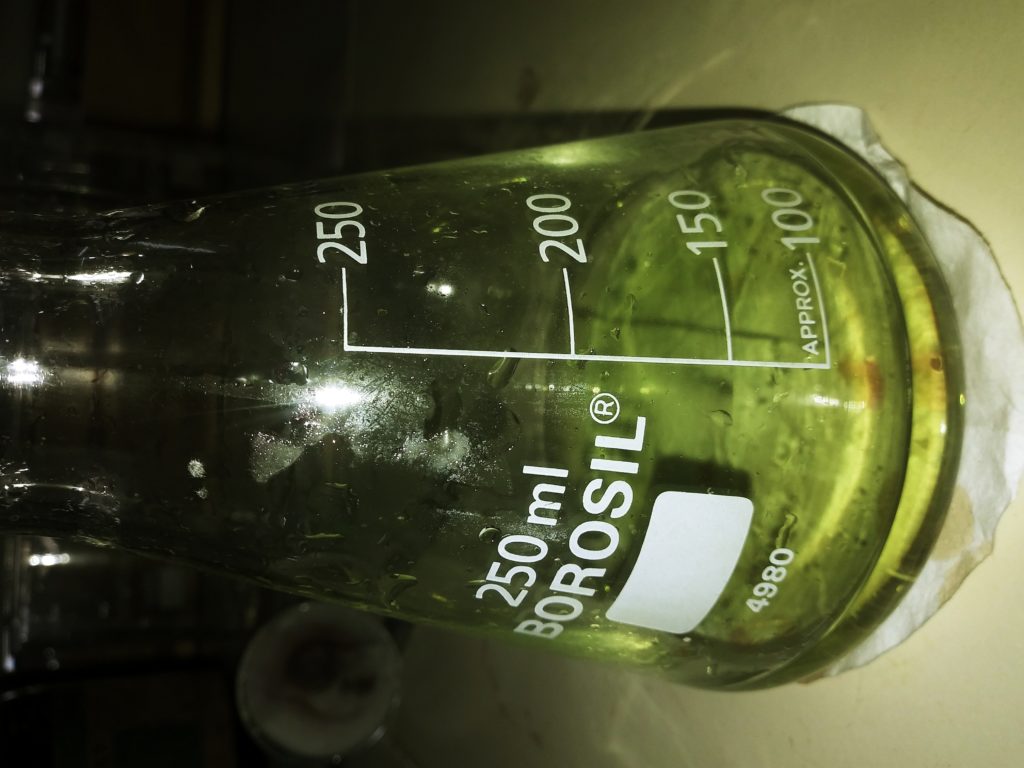
Fig. 4: Colour change after titration
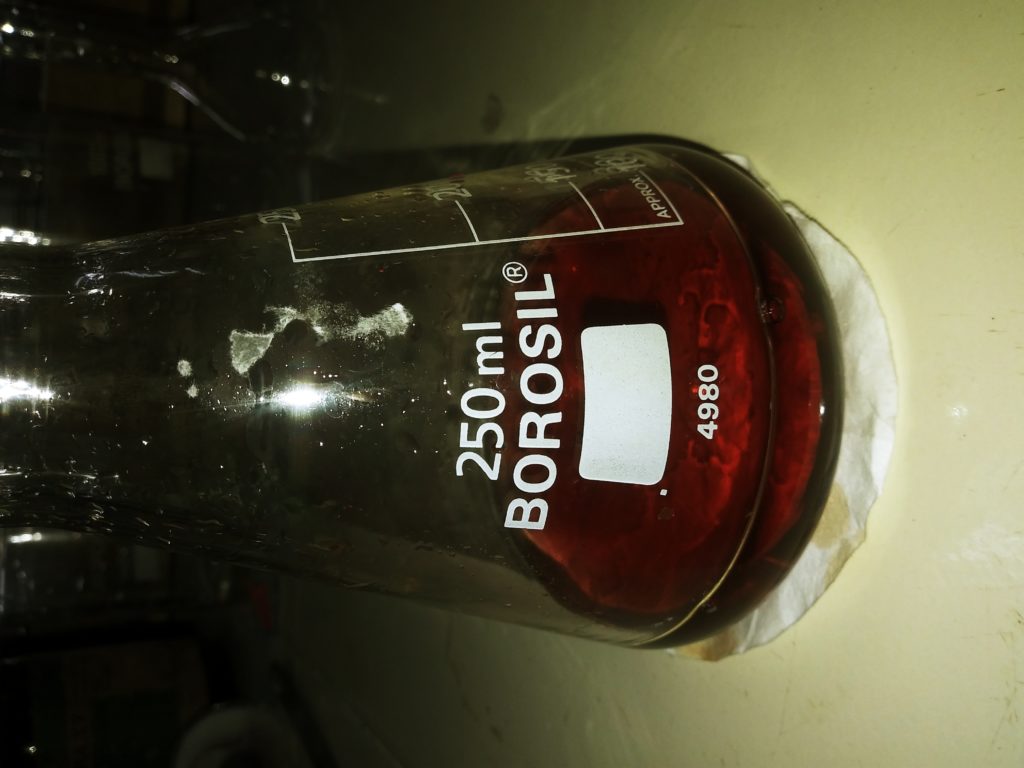
Fig5: Filtrate OF 1X

Fig 6: 1x after titration

Fig 6: 1x after titration
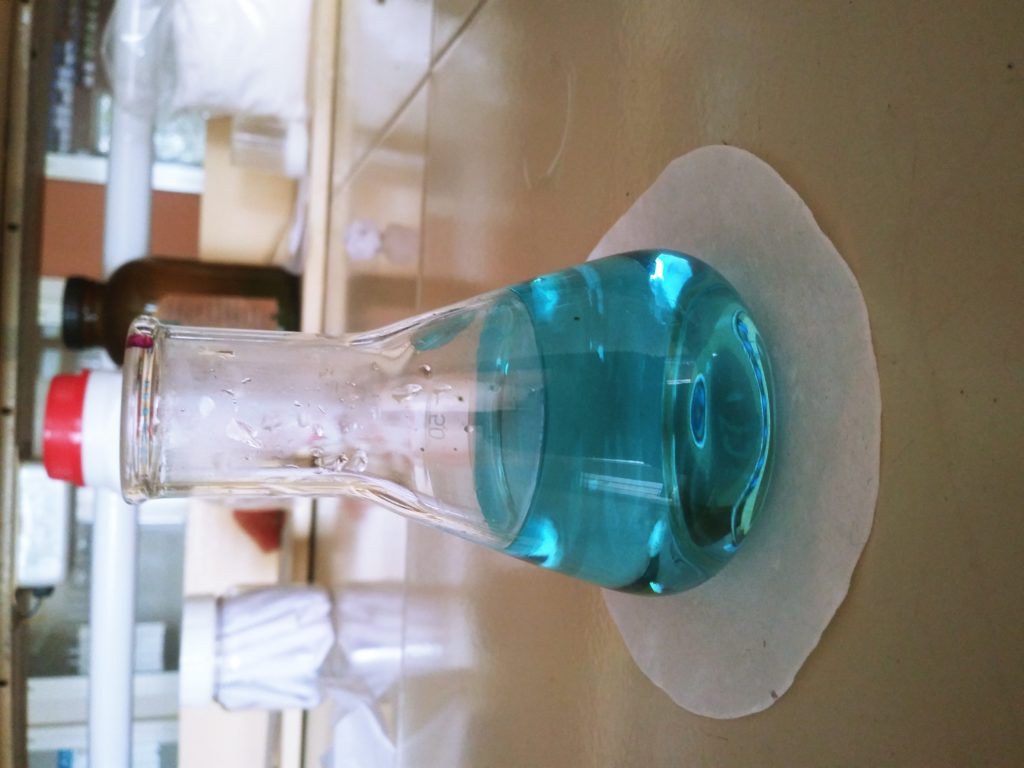
Fig 8: Filtrate after titration
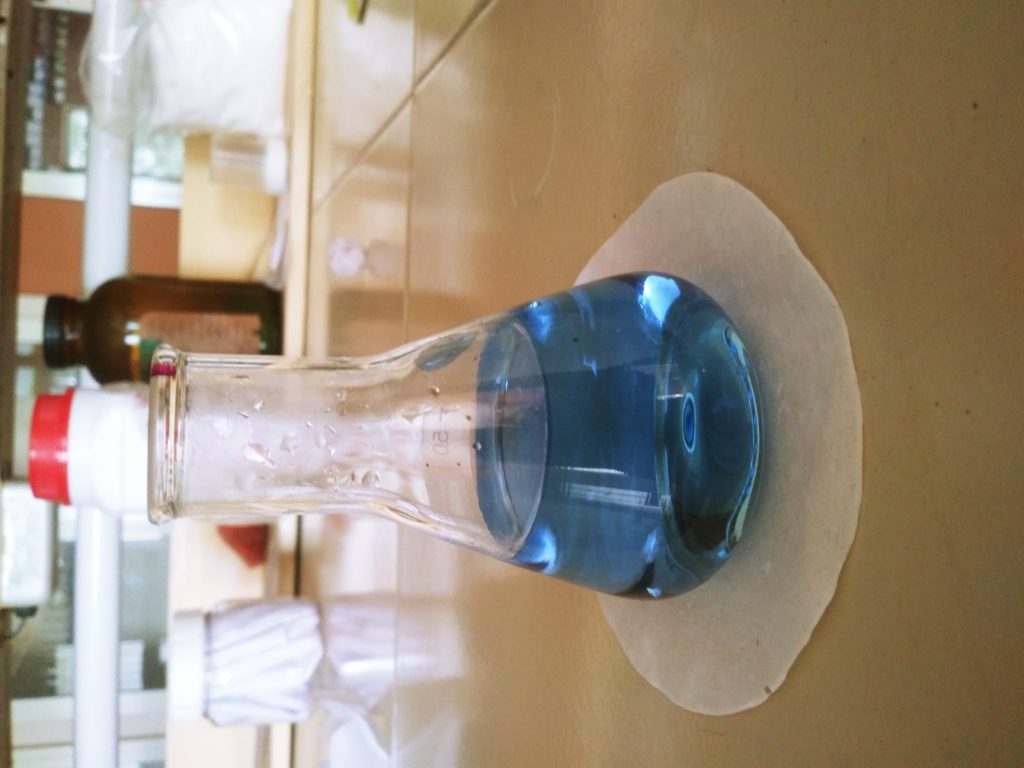
Authored by:
Dr.Gayatri Krovvidi
MD (Part 1)
Homoeopathic pharmacy
Father Muller Homoeopathic medical college and hospital
Mangalore
Karnataka


